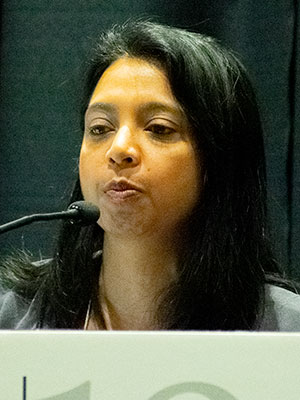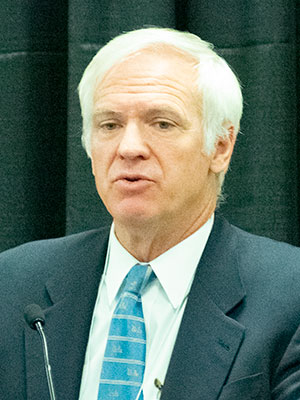
Draft recommendations from the ACR’s updated guideline for managing patients with gout were presented during a session at the ACR/ARP Annual Meeting on Wednesday, Nov. 13. The updated guideline provides clinicians with evidence-based guidance on important topics such as the optimal usage of urate-lowering therapy (ULT), treatment of gout flares, managing lifestyle factors, and other medication recommendations to help them be successful in optimally managing gout in their patients, said Tuhina Neogi, MD, PhD, FRCPC, one of the guideline’s co-principal investigators.
The manuscript containing the full list of recommendations and supporting evidence is currently under peer review, with publication expected in in early 2020.
Among the key elements of the draft guideline, Dr. Neogi said, is a strong recommendation for the use of a treat-to-target strategy with ULT for all patients with gout.
“The recommended target is less than 6mg/dl, and it may be appropriate to be lower in certain cases. We recommend starting at a low dose, with dose escalation in all patients, regardless of renal function,” Dr. Neogi said. “This is very important because there is no evidence to demonstrate that urate-lowering therapy is detrimental for renal function.”

The updated guideline includes strong recommendations for the use of allopurinol as the first line ULT therapy, including in patients with chronic kidney disease (CKD), and for the use of an anti-inflammatory prophylaxis such as colchicine, NSAIDs, or prednisone/prednisolone when starting ULT for at least 3-6 months, rather than less than 3 months, with ongoing evaluation and continued prophylaxis, as needed, if the patient continues to experience flares.
“While we don’t have a specific trial to indicate what is the optimal prophylaxis duration, we know from ULT trials that continuing prophylaxis for at least this duration of time helps mitigate against the risk of flares during the early initiation phase,” Dr. Neogi said.
Recommendations related to indications for starting ULT have been expanded to conditionally consider patients with infrequent gout flares or after their first gout flare, she said, if they also have moderate to severe chronic kidney disease (CKD stage ≥ 3), marked hyperuricemia (serum urate > 9 mg/dl), or urolithiasis.
“This conditional recommendation, as it applies to patients with CKD stage 3 or higher, is in recognition of the fact that these individuals not only have higher risk of progressing to more clinically active gout with more flares and tophi, but management of their gout flares is challenging since NSAIDs are contraindicated and colchicine can be challenging,” Dr. Neogi said. “So, starting urate-lowering therapy in these patients to lower their flare risk could help mitigate the need for exposure to gout flare therapy.”
Other significant updates in the new guideline include a conditional recommendation for HLA-B*5801 testing prior to starting allopurinol for patients of Southeast Asian descent and African American descent who have a higher prevalence of HLA-B*5801 and against HLA-B*5801 testing in patients of other ethnic or racial backgrounds, and a conditional recommendation for an augmented protocol of ULT dose management by non-physician providers to optimize the treat-to-target strategy.


